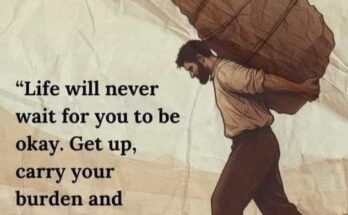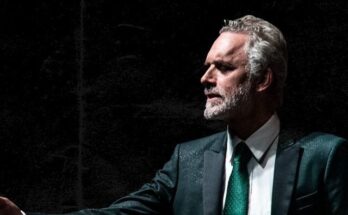Dr. Jordan B. Peterson has spent much of his career building a worldview grounded in structure, hierarchy, and enduring psychological truths. His lectures, books, and interviews are full of references to archetypes, ancient myths, biological imperatives, and the stabilizing power of tradition. To him, some rules are not just rules—they are real rules that transcend fashion or ideology. One such rule has been the belief in the relative permanence of social hierarchies and the natural authority that emerges from competence. But in recent years, this “real rule” seems to be changing—and that shift is exposing both the limitations of Peterson’s framework and the deeper uncertainties of our cultural moment.
The Rule: Competence Rises, Chaos Follows When It Doesn’t
At the heart of Peterson’s thinking is the idea that hierarchies are inevitable and, more importantly, desirable—if they are based on competence. Whether in lobsters fighting for dominance or people climbing career ladders, he argues that functional hierarchies reward ability, discipline, and resilience. This, to him, is not a political claim but a biological one—etched into nature itself. From this perspective, order is not authoritarian; it is life-saving. Rules, routines, and structures are not chains; they are scaffolding.
But that idea has collided head-on with a world increasingly suspicious of hierarchies—especially those that claim to be based on merit. Whether it’s the workplace, academia, politics, or digital platforms, many now argue that “competence” can be a cover for privilege, bias, and systemic injustice. The rule that Peterson insists is real and unchanging—that authority should flow from demonstrated ability—is now deeply contested.
Cracks in the Foundation: Changing Social Sentiments
A few decades ago, the idea of meritocracy seemed to hold sway across ideological lines. Conservatives praised it for rewarding hard work; liberals embraced it as a way to uplift disadvantaged individuals through education and effort. But in recent years, the very notion of meritocracy has come under fire. Critics argue that it often rewards those who already had advantages—better schools, stable families, inherited wealth—while punishing those who started at a disadvantage.
In this new landscape, Peterson’s insistence on competence as the basis for authority starts to feel like a relic. His call to “clean your room” and “sort yourself out” seems to ignore—or at least understate—the structural barriers that prevent many from even owning a room to clean. The rule that individual competence should naturally rise to the top no longer feels self-evident; it feels, to many, like a myth.
This isn’t to say Peterson’s insights lack value. His calls for personal responsibility, mental discipline, and psychological development have helped many people find direction. But the cultural conversation is shifting. A new rule is emerging: systems shape outcomes more than individuals do—and unless we fix the system, asking individuals to “sort themselves out” won’t be enough.
Technology: The Great Rule Breaker
Another factor changing the rules is technology. In Peterson’s framework, traditional hierarchies allowed for a slow, organic rise through the ranks—guided by competence and effort. But today’s digital platforms often reward visibility over value, noise over nuance. On platforms like TikTok or Instagram, the most competent voice doesn’t always rise; often, the loudest or most visually engaging one does. Virality, not virtue, becomes the path to influence.
This is a radical departure from Peterson’s world of carefully cultivated academic knowledge and intellectual hierarchy. It undermines the “real rule” that says genuine competence will find its place. Now, randomness and spectacle often override rigor. The gatekeepers have lost control, and the algorithms are indifferent to quality. Peterson himself became a viral phenomenon, ironically propelled by the very forces he critiques.
His fame—explosive, polarizing, algorithmically enhanced—exposes the paradox. In a world where a 20-second video can do more cultural work than a 500-page book, what becomes of the idea that competence is the cornerstone of hierarchy?
Gender, Identity, and the Rule of Biological Certainty
Perhaps no rule is more contested today than the one Peterson holds about biological sex and gender roles. His infamous stand against compelled speech in the form of gender pronouns (Bill C-16 in Canada) catapulted him into global fame. He framed it not as a matter of rights but as an issue of authoritarian language control and the denial of biological reality.
Peterson believes that certain psychological traits—like assertiveness in men or agreeableness in women—are statistically grounded in biology and reflect evolved patterns. For him, these are not merely social roles but the result of millions of years of natural selection.
But here too, the rule is changing. Gender identity is increasingly seen as fluid, self-determined, and constructed through social interaction. Across academia, policy, and public discourse, the “real rule” of binary biology is giving way to a more pluralistic, complex understanding. And for many younger people, Peterson’s framework feels not just outdated but oppressive.
Whether or not one agrees with Peterson’s stance, it’s clear that the conversation is moving. What was once considered a fact of nature is now being reinterpreted as a legacy of power. The idea that biology should define destiny—once a cultural constant—is becoming an ideological battleground.
Rules Are Real… Until They Aren’t
One of the deeper philosophical tensions in Peterson’s work is between his admiration for timeless truths and the inherently dynamic nature of culture. On one hand, he reveres ancient stories—Genesis, the Tao Te Ching, archetypal myths—as containing eternal wisdom. On the other hand, he’s a clinical psychologist who should, in theory, recognize that human societies evolve, adapt, and rewrite themselves.
So what happens when one of those “eternal rules” begins to falter? What if the relationship between competence and authority is no longer stable? What if gender roles truly are in flux? What if the structures of meaning themselves are being remixed, reimagined, and, to some extent, dissolved?
Peterson’s answer is often to double down: return to tradition, reject relativism, and beware the chaos that comes from abandoning order. But for many, the promise of change feels more liberating than terrifying. The chaos, though real, is not unmanageable—it’s creative. It opens space for voices previously silenced and identities previously invisible.
The Emotional Core: Why This Rule Matters
Beneath the intellectual debates lies something emotional—something human. Peterson speaks to those who feel unmoored, overwhelmed by a world that no longer makes sense. To them, his “real rules” offer clarity, direction, and dignity. There’s a comfort in believing that some things do not change, that competence will be rewarded, that chaos can be tamed by courage.
But for others, those same rules have been tools of exclusion. They have kept people on the margins, upheld unjust systems, and denied lived experiences. To them, the changing rule is not a descent into madness; it’s a long-overdue correction.
The tension between these two worldviews is not just ideological—it’s existential. It is about what kind of world we want to live in, and what kind of people we want to become.
The Rule That Endures: Adapt or Collapse
Ironically, one of the deepest lessons of both psychology and evolution is that adaptability is itself a kind of rule. Those who survive, flourish, and lead are not always the strongest—but often the most flexible. The same might be true for ideas. The rules that truly endure are those that can stretch without breaking, bend without losing their essence.
If Peterson’s rules are to remain relevant, they may need to adapt—not in the sense of abandoning their insights, but in recognizing new contexts. The relationship between competence and power may need to account for hidden biases. The idea of biological identity may need to make room for psychological and social fluidity. And the importance of tradition may need to coexist with the value of innovation.
In this way, a “real rule” may not be the one that never changes—but the one that knows when to change.
Conclusion: The Rule Is Changing—And That’s the Rule
Jordan Peterson has contributed powerfully to contemporary thought by reminding us of the value of order, the cost of nihilism, and the strength that comes from personal responsibility. His insights into suffering, meaning, and discipline have helped many navigate difficult lives.
But even real rules must evolve. The world is not static, and neither are its hierarchies, identities, or systems of value. What was once seen as truth may now be seen as power. What was once seen as chaos may now be seen as possibility.
Peterson’s rule—that competence should rise, that structure must hold, and that certain truths are eternal—is being tested by a generation that sees the world differently. Whether that rule holds or shifts, or adapts into something new, remains to be seen. But one thing is certain: the conversation about what is “real” is far from over—and perhaps, that is the most real rule of all.

